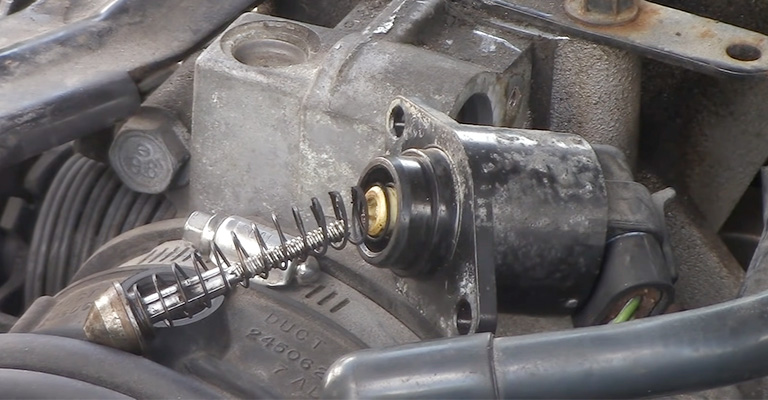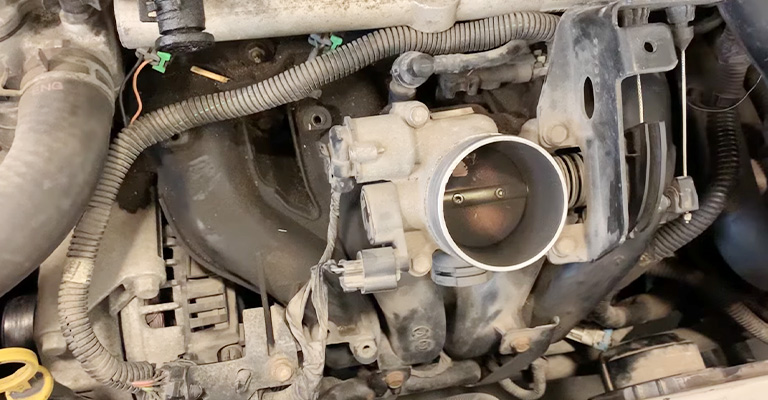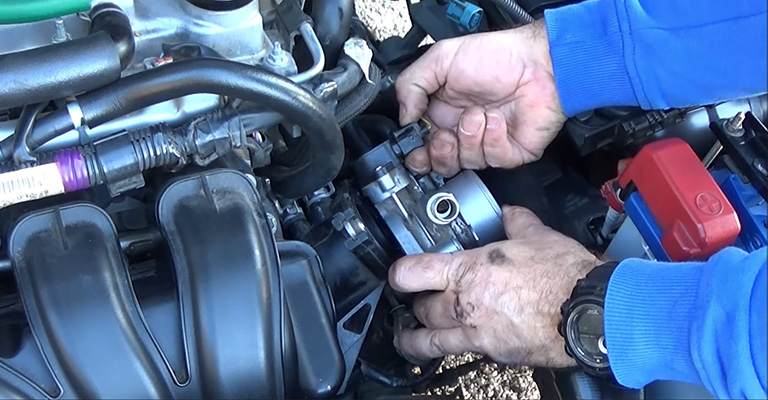Air control valves are an underrated component in a car. Most people often neglect its impotence. Moreover, many questions the fact if it’s actually worth replacing when broken!
So you may ask now, do I need an idle air control valve? How to bypass it? The valve ensures the car maintains an ideal speed to prevent the engine from working properly. Over time, the valve stops performing efficiently and must be replaced. Bypassing the component is simple and can be done within a few steps.
Nonetheless, there’s more to it! In this guide, we will discuss the details of this topic. So, stay tuned till the very end!

Why Do We Need An IAC Valve?
An idle air control valve (IACV) is used to regulate the idle speed of an engine. It is typically used in fuel-injected engines that require a constant idle speed regardless of engine load or temperature.
If the engine idle speed is too high or too low, the IACV can be adjusted to bring the idle speed back to normal. Not only that, but it also reduces harmful emissions by idling at a lower speed.
What To Do When Idle Air Control Valve Causes Problems?

Check the idle air control valve of the vehicle to ensure it is working properly. Examine the wiring and other components connected to the valve to check for corrosion and so on.
In case the component is not efficiently performing, make sure to replace the valve with a new one. You can also bypass the valve as a temporary solution to the problems caused by it.
How To Bypass Idle Air Control Valve?
As we mentioned earlier, this valve encounters issues over time. These issues prevent the system from providing efficient service and must be fixed on time. Bypassing the idle control valve is easy and does not require much time. Let us take a look at the process.
- Ensure that the vehicle is off and the ignition key is out. Locate the idle air control valve. It is usually located near the throttle body on the intake manifold.
- Unplug the electrical connector from the idle air control valve. Insert a flat-head screwdriver between the valve and the body of the manifold.
- Rotate the screwdriver to loosen the valve. Make sure that you do not damage the valve or the manifold. Pull the valve away from the manifold.
- Install the bypass hose or fitting to the manifold and the idle air control valve. You can also place a bypass plate between the throttle and valve to prevent air intake.
- Reconnect the electrical connector to the valve. Lastly, start the engine and test the new idle speed. Adjust if necessary.
How To Replace The IAC Valve?

Replacing the IAC valve is the ultimate solution to fixing the problem that vehicle owners encounter regarding idle speed. Take a look at how you can easily replace the component in a few steps.
- Before popping the hood open, make sure that the vehicle is complete.
- Disconnect the negative battery cable.
- Unplug the electrical connector from the control valve.
- Remove the screws or bolts holding the idle air control valve in place.
- Install the new valve in the same position as the old valve.
- Reattach the electrical connector.
- Reconnect the negative battery cable.
- Start the engine and check for proper idle speed. If necessary, adjust the idle speed with the adjusting screws on the throttle body.
There are quite a few issues that vehicle owners encounter with the engine component. These issues warn us that the valve requires replacement to prevent the engine from damage. Let us take a look at some of these problems.
High Idle
A bad valve can cause an engine to idle higher than normal. A high idle can be caused by a sticking valve or an electronically malfunctioning valve.
Stalling
Failing idle valves can cause an engine to stall when it decelerates, such as when slowing down at highway speeds.
Check Engine Light

Inefficiently performing valves cause a vehicle’s engine light to come on. This is usually due to an electronic malfunction.
Poor Acceleration
Last but not least, a bad IAC valve can cause an engine to hesitate or lag when the accelerator is pressed. This can lead to poor acceleration and a lack of power.
How To Maintain The Idle Air Control Valve?
Regular and proper maintenance of each and every component helps it to last longer and ensure efficient performance. Take a look at how to maintain the vehicle air valve step by step.
- Step 1. Check the condition of the idle valve. Inspect the valve for signs of wear, corrosion, or buildup
- Step 2. Clean the valve with a can of compressed air. This will help remove any dirt, debris, or buildup on the valve
- Step 3. If the valve is corroded, use a wire brush to clean it
- Step 4. Inspect the component for any signs of damage or wear. If the valve is damaged, it should be replaced
- Step 5. If it is in good condition, lubricate it with a lubricant specifically designed for the valve
- Step 6. Reinstall the valve, making sure to connect it securely
- Step 7. Start the engine and check for a smooth idle. If the idle is not smooth, readjust the valve as necessary
FAQs
Still, got questions about the topic? Read the most frequently asked questions to clear up your confusion.
Q: How Do I Know If My Idle Air Control Valve Is Failing?
A high engine idle speed is one of the most common signs of a failing valve. If you notice your engine revs up and down significantly when the car is idling, it could be a sign that the valve is failing. Other signs include a check engine light and poor fuel economy.
Q: How Do I Test An Idle Air Control Valve?
Testing a component requires specialized equipment and should be left to a professional mechanic. However, you can visually inspect the valve to make sure it is clean and free from debris. You can also check the wiring and connectors to ensure they are connected securely.
Conclusion
Each and every component in a vehicle has its own functionality. And for the smooth operation of the car, all parts need to work properly. Similarly, the idle valve is also an important piece of the automobile.
If you’re still asking, do I need an idle air control valve? How to bypass it? We believe you can easily identify the problem now and replace the valve on your own. However, if you do not have proper knowledge about the vehicle and its parts, make sure to rely on a professional.

Leave a Reply